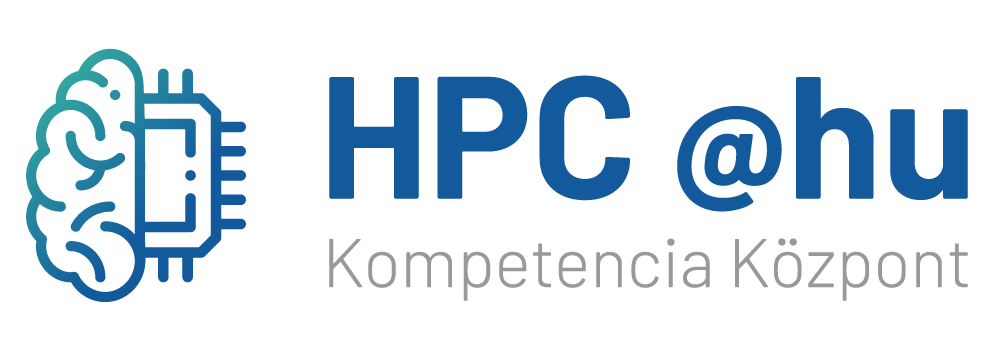FAQ
Supercomputers are universal tools for carrying out tasks requiring high-performance computing that could not be handled by traditional computers or server systems. The primary objective is to serve applications requiring extreme amounts of computing, extreme speed, or huge memory capacities.
For comparison, a laptop with a 3-GHz processor is capable of completing 3 billion computations in a second. The performance of the 5 petaflops Komondor is 5 trillion (million times billion) floating- point operations per second.
Supercomputers may help find solutions to global challenges and answers to scientific questions and may help model the weather around the globe, the biosphere, the functioning of living organisms, and the birth of galaxies. In everyday practice, they help with tasks such as weather forecasting, climate research, telecommunications, traffic management, energy production, production optimisation, or customised medicine with the rapid processing of genomic data.
For processing structured or unstructured datasets of extreme size, for various modelling and simulation tasks, and for mechanical, flow, thermodynamic, or electromagnetic calculations. For research, design, production, measurement, testing, and logistics analyses requiring large processing capacities, for the operation of machine learning systems, and for artificial intelligence, Big Data, and IoT applications. Practically, supercomputing can be used in all scientific fields and is also widely used by the industry.
Yes, there is! KIFÜ has been operating a supercomputer infrastructure in Hungary for more than 20 years. Currently, it maintains 6 supercomputers in 4 cities with an aggregated computing capacity of almost 0.5 petaflops. Komondor, which is planned to be available from 2022, will have 10 times this capacity: 6,1 petaflops.
Although the supercomputer infrastructure is of extremely high performance, it is a limited resource, and therefore requires careful capacity management. Users may include institutions of higher education, research institutions, and their partners, or – when certain conditions are met – innovative market players pursuing research and development activities.
Our supercomputers may be used by those with a valid project number, for the tasks specified in the application for that project number, and within the framework of the quotas assigned. Applications for project number(s) can be submitted after an eduID login at https://portal.hpc.kifu.hu/.
In Hungary, the use of our supercomputers is free for authorised users.
The Komondor arrived in September 2022 and was placed in the Supercomputer Centre in Kassai Street Campus of the University of Debrecen.
Komondor will have a performance which is 10 times higher than the total capacity of the existing Hungarian supercomputers; it will reach 5 petaflops, which means 5 billion times a million computations in a second.
Supercomputer performance is expressed in flops. This unit of measure refers to the number of floating point operations (e.g., addition, subtraction, multiplication and division) carried out in a second; FLoating point Operations Per Second, i.e., flops.
| Name | Value | Number of operations per second |
|---|---|---|
| kiloflops | 103 | thousand |
| megaflops | 106 | million |
| gigaflops | 109 | billion |
| teraflops | 1012 | trillion |
| petaflops | 1015 | quadrillion (a thousand trillion, i.e., billion times million) |
| exaflops | 1018 | quintillion |
The site www.top500.org has been ranking the top 500 non-distributed supercomputer systems with the highest performance in the world since 1993. This list is updated twice a year. In November 2022, the British Frontier led the list with a performance of 1102 petaflops significantly higher than the 442 petaflops performance of the second ranking Japanese supercomputer named Fugaku.
It is the abbreviation for Central Processing Unit, which is responsible for the operation of the entire system and for running the programs. One fundamental component of a CPU is the processor core, which executes the specified tasks. As regards structure, a CPU can be a single-core or a multi-core unit.
Translator programs, libraries, and other development tools of computer programming languages, as well as various software environments required for running parallel applications, HPC tools for Linux-based environments, optimised parallel mathematical libraries, and several licensed and open-source HPC applications are available in supercomputers. Click here for a list of software programs that are currently available.
The theoretical maximum of the electric input of the new Hungarian supercomputer, Komondor, is 1.3 MW/hour, but the actual consumption will depend on the final configuration, external temperature, and rate of use.
In Hungary, the average electricity consumption is 2168 kW/year per capita; that is, our latest supercomputer consumes as much as, for example, the town of Jászfényszaru (assuming near-maximal use rate). And all this while it will have a special so-called adiabatic, i.e., direct hot water-based cooling system to reduce the cooling costs.
Consumption is proportional to performance: Tianhe-2 (33.9 petaflops, 3.12 million processors) – a supercomputer located in the supercomputer centre of Guangzhou, China – has an electric input of 17.8 MW/hour, which is equivalent to that of a settlement with 72,000 inhabitants.
Through a high-speed optical network. Komondor will communicate with the outside world at a bandwidth of 100 GB/sec through HBONE+, the backbone network serving academic education, public education, research & development, libraries and public collections, and several other public institutions in Hungary.

